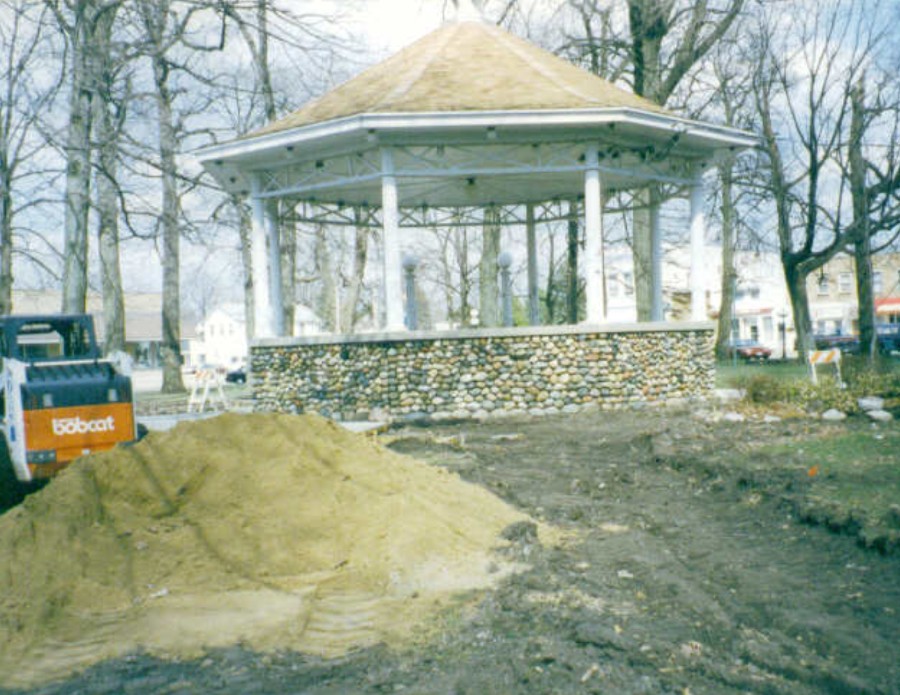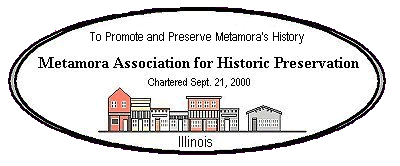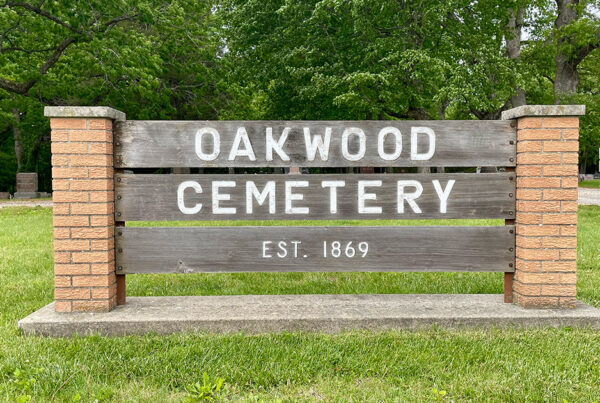Surveyors of the Hanover Company laid out the Village of Hanover (now Metamora) in 1836. The plan included an open space of 300 feet by 300 feet in the center of the village, designated by Agent William Davenport as a public square.
In June 1865 Surveyors recorded a plat using a blue marble stone 41 by 21 by 13 inches at the NE corner of the public square. A boulder 14 by 13 by 16 inches on the SE corner. Other stones were set at the NW and SW corners of the square and throughout the village.
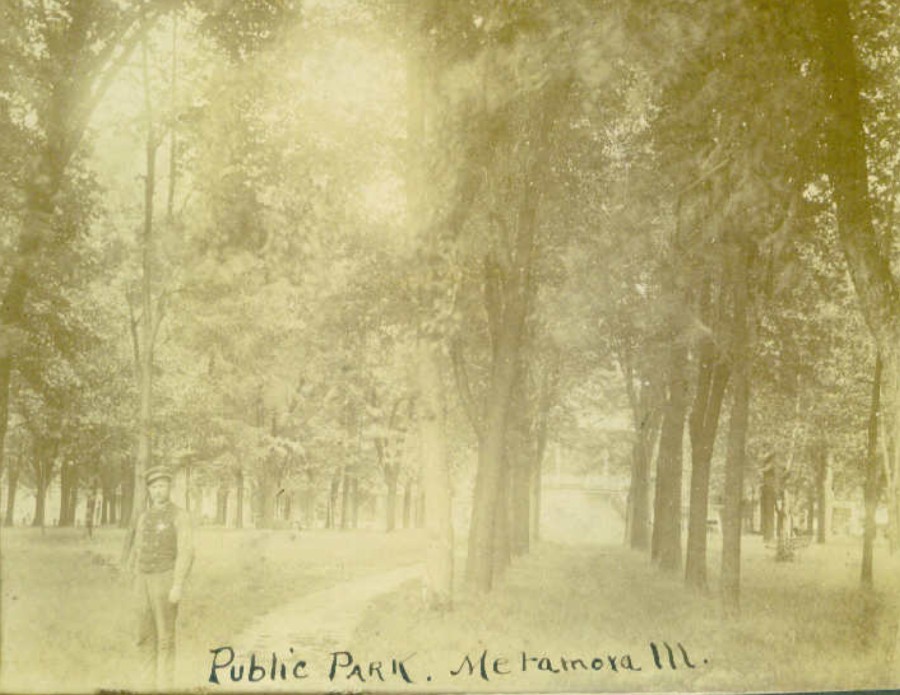
A quote from the 1887 Woodford Sentinel – “The Town Board is talking of putting a fence around the square. We hope it is not all wind”
In 1900, the Village Board gave permission to order five economy gas lamps to be placed around the public square. Hitching posts and water troughs were a common sight around the park during the horse and buggy days.
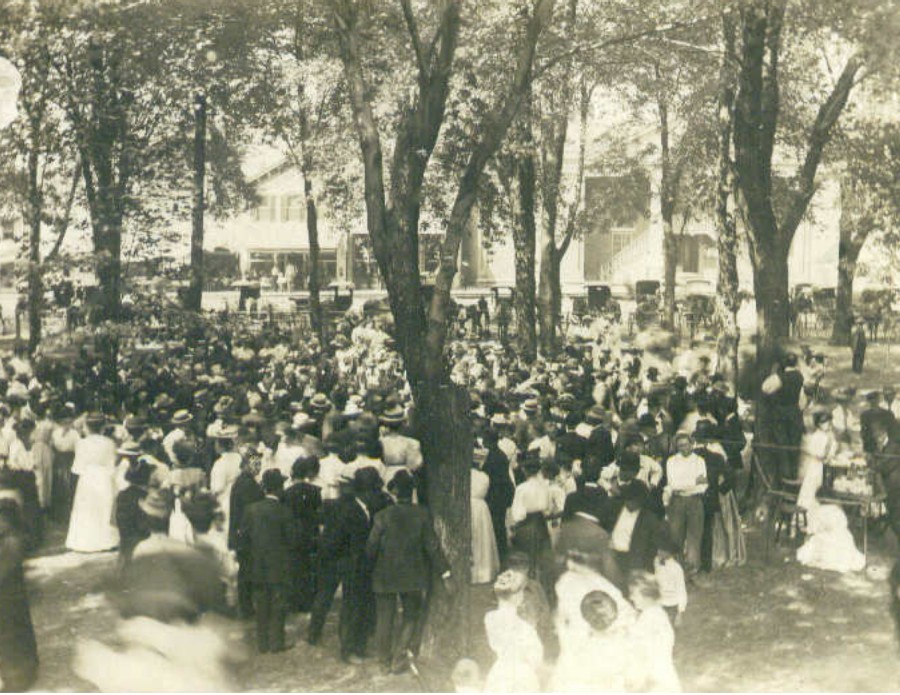
In 1915-1916 diagonal concrete walks took the place of footpaths.
In 1921 Congressman Frank H. Funk of Bloomington introduced a bill for the donation of one German cannon from the store of such arms captured during World War I. In August the barrel of the cannon arrived. The barrel was a three-inch rifled muzzle loader, model of 1861. It was shipped from an arsenal in New Jersey. The trucks arrived a few weeks later. They were of the 1895 type, undoubtedly having been made for service in the Spanish-American war.

The photo submitted by Kenneth Willman shows the cannon still on display in the park during the winter of 1940-1941. In October of 1942, the Metamora Herald reported that during Metamora’s third scrap iron drive, a parade to celebrate the success of the event was held. The parade was headed by the old Civil War cannon from the park, mounted on a truck with an old church bell ringing. Both had been consigned to the scrap heap.
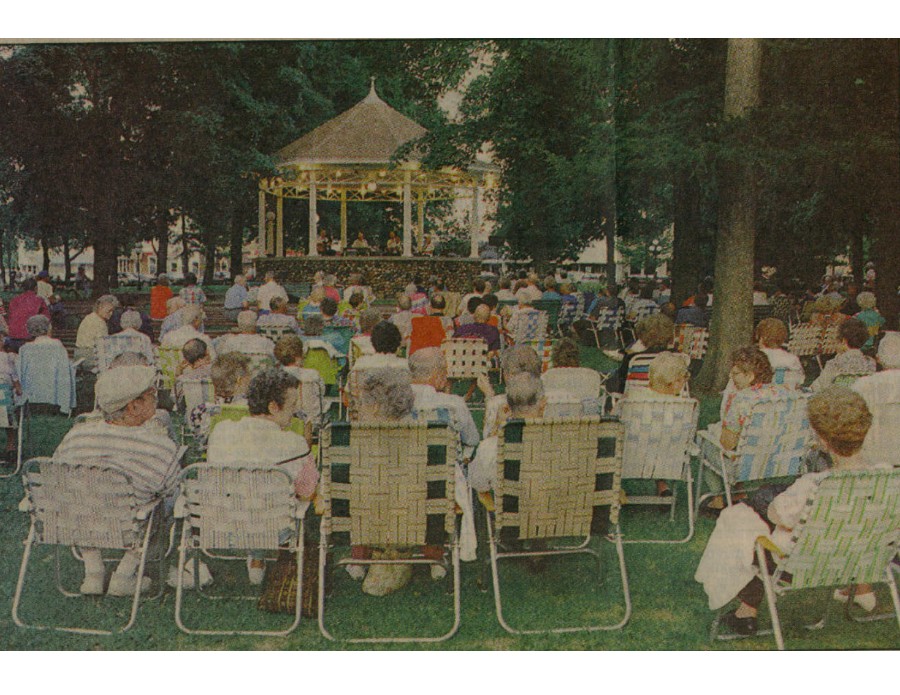
To further enhance the park three and five globe lamp posts were installed in 1990.
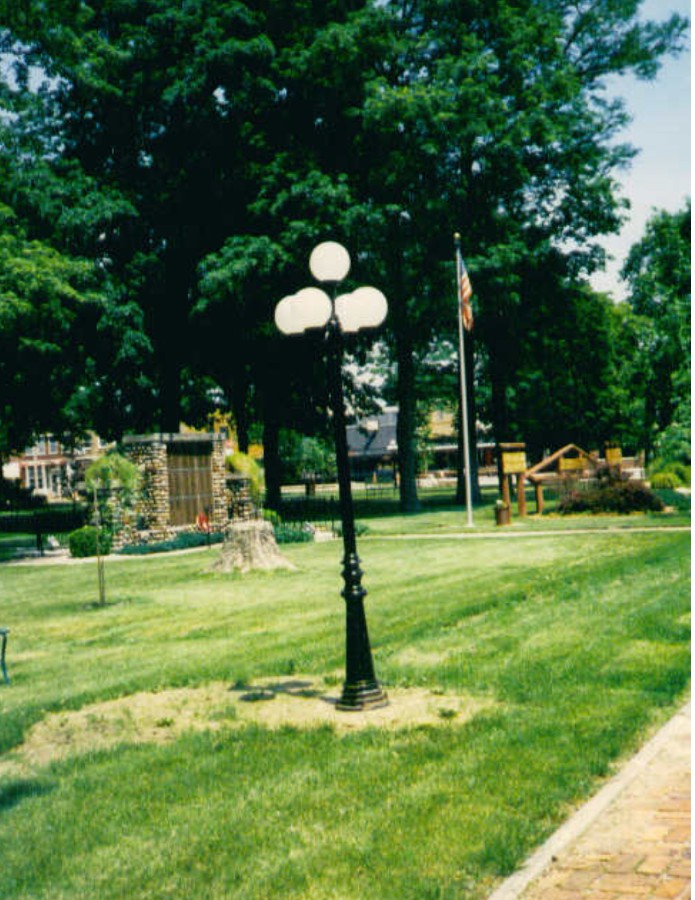
The sidewalks were replaced in 1997. A redbird etched in the cement can be seen on the north side of the bandstand.
